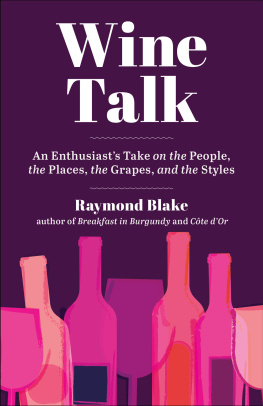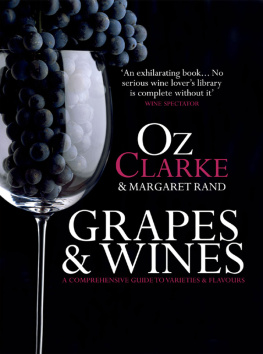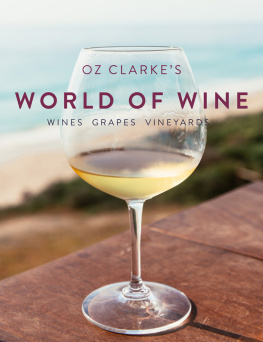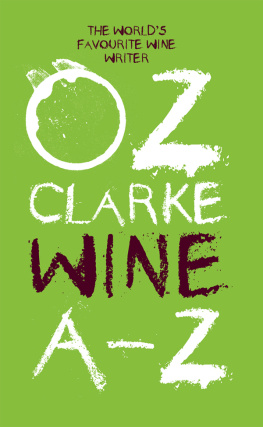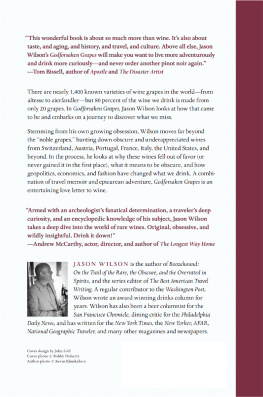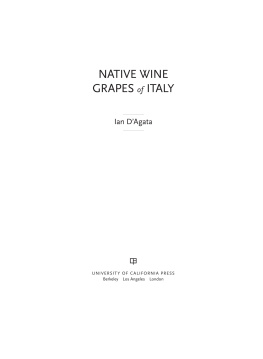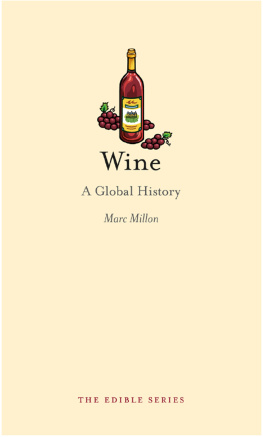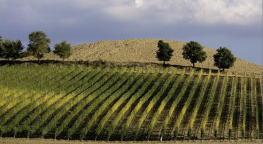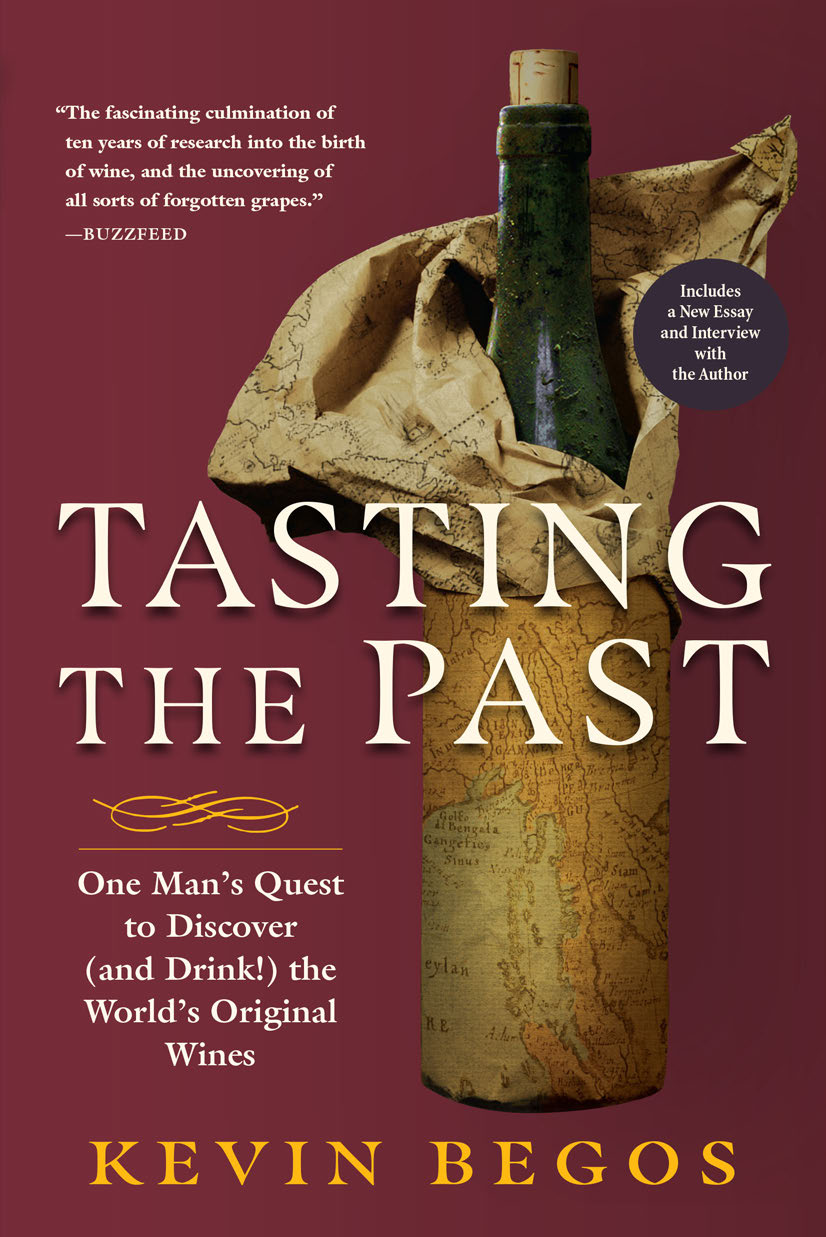Tasting the Past
One Mans Quest to Discover (and Drink!) the Worlds Original Wines

Kevin Begos

ALGONQUIN BOOKS OF CHAPEL HILL 2019
For my mother and father,
two book lovers
Contents
PART ONE

Were still caught in that trap of saying, well, there are only ten good [grape] varieties in the whole world, and thats it.There are wonderful wines to be made everywhere from a huge number of varieties.
Andy Walker, Louise Rossi Endowed Chair in Viticulture, University of California, Davis
A Mysterious Wine

The Wine of Life keeps oozing drop by drop,
The Leaves of Life keep falling one by one.
Omar Khayyam, The Rubayiat , ca. 1100
Alone in Amman, Jordan, I looked at the mini-bar skeptically yet wistfully. Finding good wine in a hotel room is a tantalizing concept, but I had a rule: never buy the stuff. This place had rustic tiles and carved wooden doors in the lobby that gave way to generic roomsclean and fairly comfortable, but like a Holiday Inn, without character. I was fidgety. Watching Arabic TV without understanding a word was only briefly entertaining. The evening call to prayers from a nearby mosque reminded me of the limited alcohol options, and I knew hardly anyone in the city. I went over to the TV cabinet, opened the door again, and sadly contemplated the row of bottles next to the little refrigerator. One red wine had an unusual label with old-fashioned type and images. It read:
Produced and Bottled by Cremisan Cellars
HOLY LANDBethlehem
That seemed odd. It was the spring of 2008, and there were still vineyards in Bethlehem? My hazy Catholic childhood taught me that people drank wine there in biblical times, but Id never seen Cremisan on a store shelf or restaurant list, or in a review. The label said they started making wine in 1885, which I found interesting but also curious. Had no critics checked it out? The winery is just a few miles from Jerusalem.
The bottle was the only thought-provoking thing in the room and I was tired, physically and emotionally, from a Middle East reporting assignment. With low expectations I broke my rule, pulled the cork, and took a sip. Wow. I perked up immediately. The dry red wine had a spicy flavor, sort of Syrah-ish, but not quite. It was drinkable, balanced, and pleasingly different, with even a hint of earthy terroir. I went to bed happier, imagining it might be fun to visit Cremisan.
But deadlines beckoned for the rest of the trip. I returned to the United States planning to buy another bottle at home to share with friends. No luck. Visits to wine stores drew blank stares. Cremisan didnt have an American importer, so I couldnt even buy the wine online. When I told the story, some suggested that I airfreight a few bottles. They didnt get the torturous nature of international wine shipping laws. Bethlehem is technically in the Palestinian Territories, and that didnt help either, especially after the Second Intifada, or uprising. I tried emailing the winery but got no response.
There was something else, too. I was getting bored with the Chardonnays, Merlots, Cabernet Sauvignons, and Rieslings in every wine store and on every restaurant list. Im not against those grapesof course they make some wonderful wines. But why the lack of diversity? Wasnt there more?
Little details about Cremisan kept me intrigued. Once, when I looked for news of my wine-madeleine, I found Cremisans rudimentary website. The winemaker was an Italian monk, and the monastery was built near the ruins of a seventh century Byzantine church. They made some Merlot, but also used local grapes Id never heard of: red Baladi, white Jandali, and Hamdani. Had they really grown in this region for thousands of years? Did Cremisan use native grapes to make wine that the Egyptians, biblical prophets, and Romans might have drunk?
The buying difficulty was perplexing. Why wouldnt a nice, modestly priced wine from a vineyard in the heart of the Holy Land have at least a small built-in market? Perhaps the monks were indifferent to worldly marketing. Whoever heard of monks in the Middle East making wine in the twenty-first century, anyway?
The website showed various labels with a jumble of multicultural wine references: Ctes de Cremisan, Old Hock, Davids Tower, Cana of Galilee, and Blanc de Blanc, made from selected Daboky local white grapes grown in the mountains of Bethlehem. I listed influences and came up with ItalianFrenchChristianJewishArabicBritishGermanSpanish. In a region so fractured by ethnic and religious wars, this melting pot was sort of endearing.
The memory of my hotel room wine lingered like the refrain of an old pop song. In 2011 I moved on to a busy job as a correspondent for the Associated Press, and soon afterwards I looked for Cremisan or their mysterious grapes in the third edition of the authoritative Oxford Companion to Wine, which was the current one at the time. Nothing. The entry on Israel said vineyards there were destroyed after the spread of Islam in AD 636, and that the Crusaders temporarily restored wine production between AD 1100 and 1300, but with the exile of the Jews, vine-growing ceased. Supposedly no real wine industry existed until Baron Edmond de Rothschild started a winery in the 1880s. Even worse, it said Israel currently had no indigenous varieties of grapes.
But another entry on a nearby page of the Oxford Companion [under Islam] said that in the Middle Ages Muslim conquest by no means outlawed wine production and that Arabs even tried finer wines made in the Christian monasteries of Iraq. Abu Nuwas, who lived in Baghdad around AD 800, was famous for his scandalous poems about drinking, with lines such as [P]our me a glass of wine, and confirm that its wine! / Do not do it in secret, when it can be done in the open.
I was confused. Wines supposed disappearance from the Holy Land seemed to be one of those lazy cultural stereotypes that appears to make perfect sense, until you realize it doesnt. That region had significant Christian and Jewish communities from the seventh to twentieth centuries, under many different rulers. Islams wine prohibition didnt apply to them. How could winemaking and vineyards have vanished?
But I didnt really have the time to explore Middle Eastern wine history. Tracking down bottles from Cremisan fell to the bottom of my to-do lists. Id stumbled on an unusual wine, nothing more. From time to time, though, whenever I read a little pocket-sized book of Persian poetry I was fond of, Id be reminded of possible holes in the Oxford Companion narrative. In the 1200s Rumi wrote: That jug full of wine has brought me to such a state that I have broken so many jars today.
Sometimes the Muslim wine poets spoke metaphorically about alcohol, but to me the vivid lines also suggest real-life experience. Medieval Jewish wine poets who had lived in what is now Israel wrote about wine, too.
When your heart is cradled in sorrow
and trouble today and tomorrow,
day after day,


